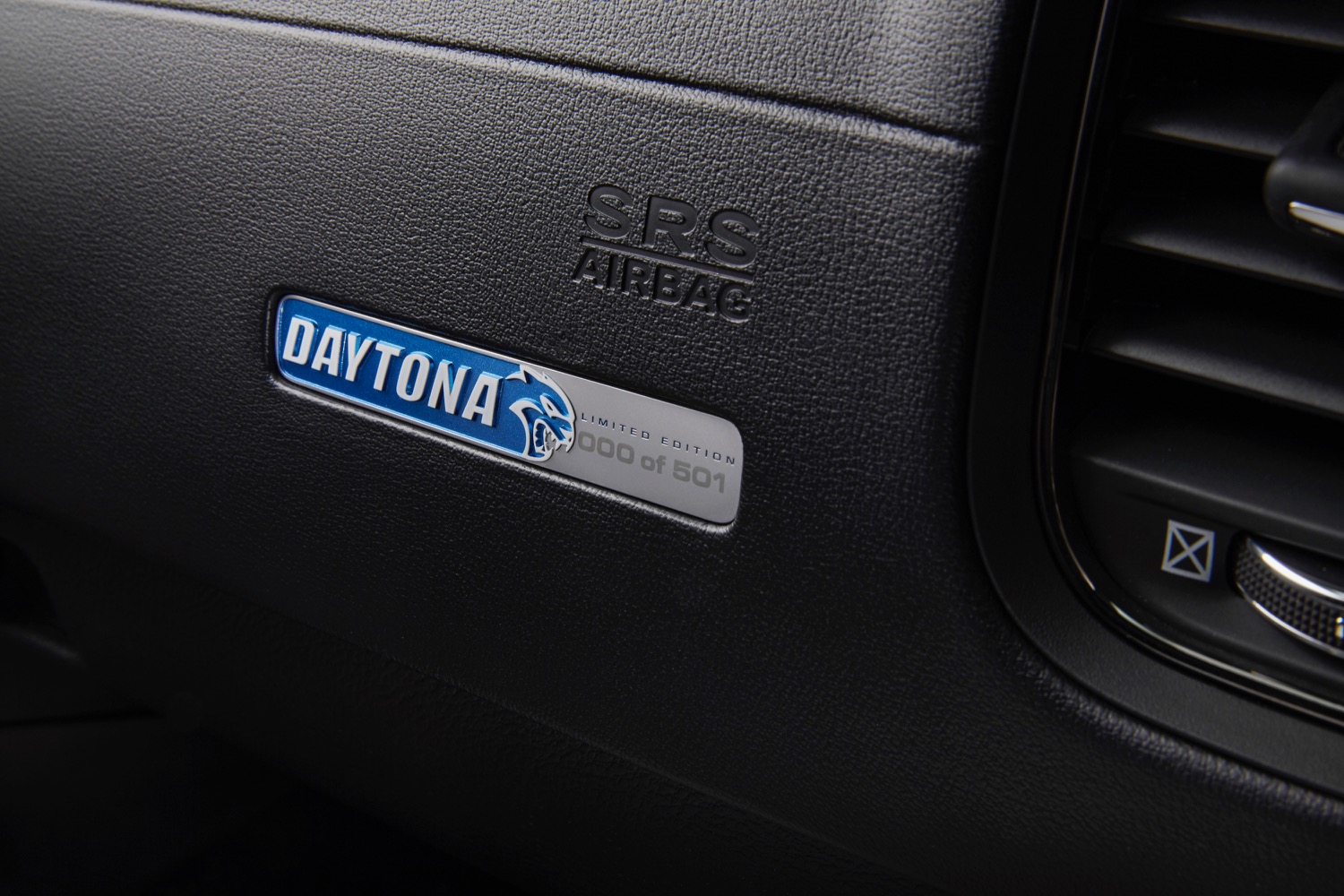The Dodge Charger is basically a four-door version of the Challenger, so it’s easy for Dodge to swap parts from one car to the other. The Charger recently got the Challenger’s Widebody look, and now it’s getting an engine upgrade previously seen on the Challenger, but only for a limited-edition model celebrating one of Dodge’s most iconic muscle cars.
The 2020 Dodge Charger SRT Hellcat Widebody Daytona 50th Anniversary Edition is notable not just for having one of the longest names of any car currently in production, but for giving the Charger a power boost. The familiar 6.2-liter supercharged Hellcat Hemi V8 makes 717 horsepower — an increase of 10 hp. Torque output remains unchanged at 650 pound-feet. Horsepower now matches the Dodge Challenger SRT Hellcat, although the two-door model makes 656 lb-ft.
That makes the Daytona 50th Anniversary Edition the most powerful Charger you can buy, but the same engine makes 797 hp in the Challenger SRT Hellcat Redeye. We wouldn’t be surprised if Dodge eventually pulled the trigger on a 797-hp Charger as it looks to squeeze as many sales as possible out of the aging sedan.
The upgraded Charger commemorates the 1969 launch of the original Dodge Charger Daytona — one of the most over-the-top American muscle cars ever built. In the 1960s, Dodge wanted to dominate NASCAR, and decided that aerodynamics would be the key. Dodge’s Charger had plenty of power, but was about as aerodynamic as a refrigerator. Engineers fitted the car with a nosecone and a massive rear spoiler, allowing a prototype to average 200 mph per lap in testing. At the time, NASCAR rules required race cars to be based on production models, so Dodge built 501 road-going Daytonas for people to buy.
The Daytona 50th Anniversary Edition doesn’t have the original’s nosecone or rear spoiler, but it does get a paint job reminiscent of that car. It also gets model-specific 20-inch wheels and Brembo brakes. The interior sports Nappa leather and Alcantara seats, real carbon fiber trim on the dashboard, a suede flat-bottom steering wheel, and other model-specific trim elements.
Just like the original, production of the Daytona 50th Anniversary Edition will be limited to 501 units. Dealer order books will open this fall, with deliveries scheduled to begin in 2020. Pricing will be announced in the coming months.










